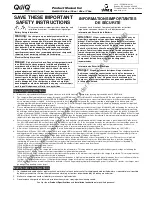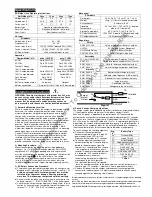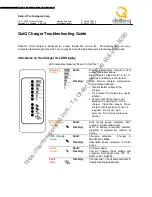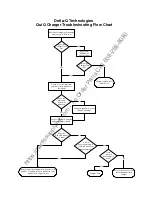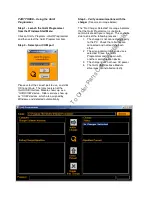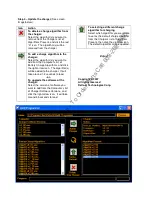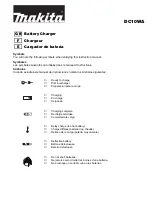
•
Try the charger on a good battery.
•
If this fault occurs the battery pack is likely in poor condition. Try to
recover the pack with a charger that can charge the individual cells –
such as an automotive charger. Be sure to set this charger to the
appropriate voltage – 6V per 6V battery, 12V per 12V string/battery.
Over-Temperature: This fault indicates the charger has become too hot during
operation. This extra fault indication (as opposed to the flashing ammeter described
above), indicates an even higher temperature was reached inside the charger.
Though not damaging to the charger, charge time will be extended significantly
•
This fault indication will not clear automatically, but the charger will
restart charging automatically when the temperature drops. The fault
indication must be cleared manually by unplugging the AC power,
waiting 30 seconds and reconnecting the AC.
•
If possible, install the charger in a cooler location or increase cooling air
flow to the cooling fins.
•
Confirm that dirt or mud is not blocking the cooling fins of the charger. If
required, clean the charger by rinsing it with a low pressure hose. Do
not use high pressure. Do not use a pressure washer.
QuiQ Internal Fault: This fault indicates that the batteries will not accept charge
current, or an internal fault has been detected in the charger. This fault will nearly
always be set within the first 30 seconds of operation. If it occurs after the charger
has started charging normally, be sure to make a note of it.
•
Try to clear the fault by unplugging AC power, waiting 30 seconds and
reconnecting the AC.
•
Check all battery connections. Look for a high resistance connection.
The most likely reason for this fault is a fault in the battery such as a bad
battery connection, an open cell, or insufficient water.
•
This fault will occur if an internal fuse inside the charger blows. If the
green wire is shorted to ground even momentarily this fuse will blow. To
check the fuse, measure with an ohmmeter between the green and red
wires with the AC disconnected. If a short circuit is not measured, the
fuse has blown. Return unit to a service depot to have this fuse
replaced.
•
For software revision 0.81 or older, this fault may indicate that the input
or output voltage went out of range. Check input and output connections
before returning the unit to a service depot. Charger may need to be
brought to a service depot to have its software upgraded. Refer to the
lower right hand corner on the back of the Product Manual to determine
the software revision.
•
If this fault occurs after battery charging has started, confirm that AC
power was not interrupted and that all battery connections are good.
•
If all battery connections are good, an internal fault has been detected
and the charger must be brought to a qualified service depot.
Other Indications:
Indication
Explanation and Solution
AC On LED Lit,
Charger won’t
start charging.
Charger has detected a condition that does not allow it to charge
https://harrissupplyind.com - To Order Parts Call 608-268-8080

